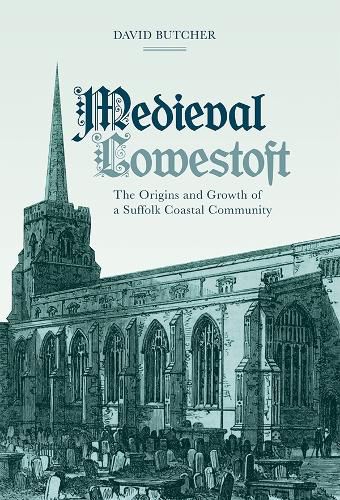Readings Newsletter
Become a Readings Member to make your shopping experience even easier.
Sign in or sign up for free!
You’re not far away from qualifying for FREE standard shipping within Australia
You’ve qualified for FREE standard shipping within Australia
The cart is loading…






A superb piece of local history. Professor Mark Bailey, University of East Anglia.
Lowestoft became an increasingly important Suffolk town during the later middle ages. This book traces its history from its Anglo-Saxon origins up until its fully recognisable urban nature in the first half of the sixteenth century. During that time, notable changes occurred in its social, economic and topographical structure, all of which are investigated here;the picture which emerges is one of small beginnings which eventually led (following the township’s relocation to a new site) to a position of local pre-eminence.
Two important elements in Lowestoft’s overall development were its surface geology and coastal location, and due account is taken of these influences. So is its comparative freedom from outside interference in its affairs by having a far-distant, absentee manorial lord. Added to these factors was proximity to the port of Great Yarmouth, whose late medieval difficulties (access to the harbour and effective control of local waters) were very much to Lowestoft’s advantage in developing its own maritime activity. From being a mere outlier to the Lothingland hub-manor at the time of Domesday, the town gradually became not only a notable coastal station in local terms, but one which was directly connected with various ports on the continent of Western Europe. For a community of only moderate size, it had broad and wide-ranging associations. Particular attention is paid to the town’s magnificent church, and to its fishing industry.
David Butcher is a retired Lowestoft schoolteacher and former lecturer in the Continuing Studies Department at the University of East Anglia. He has published widely on the local history of the Lowestoft area.
$9.00 standard shipping within Australia
FREE standard shipping within Australia for orders over $100.00
Express & International shipping calculated at checkout
A superb piece of local history. Professor Mark Bailey, University of East Anglia.
Lowestoft became an increasingly important Suffolk town during the later middle ages. This book traces its history from its Anglo-Saxon origins up until its fully recognisable urban nature in the first half of the sixteenth century. During that time, notable changes occurred in its social, economic and topographical structure, all of which are investigated here;the picture which emerges is one of small beginnings which eventually led (following the township’s relocation to a new site) to a position of local pre-eminence.
Two important elements in Lowestoft’s overall development were its surface geology and coastal location, and due account is taken of these influences. So is its comparative freedom from outside interference in its affairs by having a far-distant, absentee manorial lord. Added to these factors was proximity to the port of Great Yarmouth, whose late medieval difficulties (access to the harbour and effective control of local waters) were very much to Lowestoft’s advantage in developing its own maritime activity. From being a mere outlier to the Lothingland hub-manor at the time of Domesday, the town gradually became not only a notable coastal station in local terms, but one which was directly connected with various ports on the continent of Western Europe. For a community of only moderate size, it had broad and wide-ranging associations. Particular attention is paid to the town’s magnificent church, and to its fishing industry.
David Butcher is a retired Lowestoft schoolteacher and former lecturer in the Continuing Studies Department at the University of East Anglia. He has published widely on the local history of the Lowestoft area.